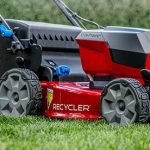So, you just bought your first home. You’ve created the garden and planted some shrubs, but you want to include one or two trees in the landscape. There is one problem. Your lot is small, too small for a tree or two.
Well, maybe not. There are small trees any of which could look great on your small lot. Believe it or not, there are urban tree specialists known as Urban Forest Professionals and there are associations that represent the profession, one called the Society of American Foresters. These groups have endorsed a number of small trees for planting on small lots. The trees are indeed small. Not one will grow more than 30 feet tall. Many of these small trees flourish in many regions of North America and they can be found at online and local nurseries.
Here is a list of small trees that you might want to research and consider for your yard.
· Amur Maple. Capable of growing about 20 to 30 feet tall, this is a low-growing tree that can be nurtured as a multi-stemmed clump or trained into a small tree with a single trunk of about 4 to 6-feet tall. It grows upright with rounded, finely branched limbs that create dense shade under its crown. It does feature excessive amounts of branches. So some pruning is necessary especially during its early years to develop dominant major branches. It grows quickly when it gets water and fertilizer, but it can be placed under power lines because its growth slows down and it will remain small at maturity.
· Crabapple. This species of small tree thrives in sunlight in areas of good air circulation. It seems to do well in most types of soil that is well drained. The size, flower color, fruit color and growth and branching differ, but many grow to about 20-feet tall and wide. When blossoming, the tree shows fall colors and include single flowered or double flowered blossoms. Some grow heavy every other year. People who plant it like its eye-catching flowers and brightly colored fruit.
· Eastern Redbud. This moderate to quick growing tree can reach heights of about 20 to 30 feet. It feature red twigs and shining purple-red new leaves that turn to purple-green during the summer in southern regions of the country that are included in zones 7, 8 and 9 of the USDA hardiness map. Purple-pink flowers appear all over the tree in the spring before the leaves appear. As the tree gets older it forms a flat-topped, vase shape. It commonly branches low on the trunk. It is recommended that you prune it to reduce the size of the lateral branches, save branches that form “U”-shaped crotches and prune off the “V”-shaped crotches.
· Flowering Dogwood. Known as the state tree of Virginia, the Flowering Dogwood grows to a height of 20 to 35 feet and spreads out about 25 to 30
feet. It can be trained to have one central trunk or to have many trunks. Its flowers include four bracts that include pink or red supports for small, yellow blooms. The fall color on most plants will be red to maroon and birds eat the bright red fruit. Branches on the lower half of the top grow horizontally while branches in the upper half are more upright. If some branches are thinned, there is a horizontal appearance that opens up the crown.
· Hedge Maple. Capable of growing to a height and spread of 30 to 35 feet, the branches of this tree offer a fine texture in the winter due to its slender and profusely growing branches. Lower branches can be pruned to allow clearance beneath the crown. It is an ideal street tree for residential areas as well as adjacent to a patio and can serve as a shade tree because, although it is
small, it does over dense shade. However, it grows a little bit too tall for placement under power lines.
· Allegheny Serviceberry. Thriving in shade or partial shade, it grows to a height of 30 to 40 feet and a spread of 15 to 20 feet. It features upright multiple stems and has a lot of branches that form a dense shrub. However, if properly pruned, it develops into a small tree. Short-lived, it grows quickly and can serve as a break in a garden or as flora that attracts birds due to its sweet and juicy purplish, black berries. It features white flowers carried in drooping clusters that bloom in mid-spring. In the fall the color is yellow or red. It can be planted under power lines due to its small size.









